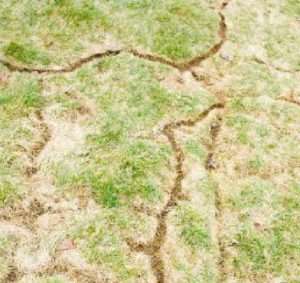Unleashing the Power of Vole Bug Control: Advanced Techniques for Invasion Obliteration and Therapy

Vole Insect Recognition and Evaluation
Voles, small rats that look like mice however have shorter tails, are frequently identified parasites in yards and yards, requiring comprehensive analysis to figure out the degree of their invasion. Identifying voles includes acknowledging their unique attributes, such as their stocky bodies, brief legs, and small eyes. They are usually around 3 to 9 inches long and can differ in color from grey to brownish.
Evaluating vole infestations is crucial for implementing efficient bug control approaches. Signs of vole existence include runways in verdant areas, harmed vegetation, and little burrow openings near the surface. By inspecting these indications, residential property proprietors can assess the intensity of the infestation and develop suitable obliteration methods.
To accurately assess vole populaces, individuals can establish lure stations or catches to record and count the rats. Additionally, observing vole activity patterns can offer insights into their numbers and circulation throughout the damaged area. By performing a comprehensive analysis, people can tailor their parasite control technique to successfully fight vole problems in gardens and backyards.
Cutting-Edge Capturing Methods

In addition, some digital catches are outfitted with sensors and remote monitoring capabilities, enabling homeowners to track vole task and catch condition from a distance, improving the general effectiveness of vole insect control efforts. By integrating these cutting-edge capturing techniques right into pest management techniques, home owners can tackle vole infestations with precision and empathy.
Strategic Exclusion Techniques
Carrying out strategic exclusion techniques is necessary in preventing vole problems and protecting yards and yards from damage created by these pests. One efficient method is the setup of hardware towel barriers. These barriers should be buried at the very least 12 inches deep and surge 6 inches above the ground to avoid voles from tunneling beneath or climbing over them. In addition, trimming shrubs and trees to maintain a clear space between the plants and the ground can aid lower vole sanctuary and hiding areas.
One more crucial exemption method is the use of crushed rock or rock mulch instead of organic mulch. These entrance points need to be sealed with products like concrete or steel blinking to stop vole accessibility.
Eco-Friendly Repellents and Deterrents
Using moved here eco-friendly repellents and deterrents is a lasting strategy to handling vole populaces and minimizing damages to gardens and backyards. Eco-friendly options are gaining popularity because of their performance in fending off voles without triggering harm to the environment, pet dogs, or beneficial wildlife. One typical green approach is using all-natural vole repellents such as castor killer, oil, or garlic urine, which create undesirable aromas for voles, driving them far click here for info from dealt with areas.
One more green deterrent is making use of physical barriers like wire mesh or equipment towel to secure prone plants and bulbs from vole damage (vole control). These barriers serve as a safety net versus vole invasion while permitting proper aeration and drain in the dirt
Additionally, introducing vole killers like owls or setting up nest boxes can assist naturally control vole populaces in a garden or lawn. By urging natural killers, a balanced community can be preserved without the requirement for damaging chemicals or catches. On the whole, including green repellents and deterrents in vole bug control methods promotes lasting and environmentally conscious methods.
Integrated Parasite Administration Solutions
An alternative approach to managing vole populaces and mitigating damage in yards and yards includes the thorough strategy of Integrated Parasite Management Solutions. Integrated Insect Administration (IPM) incorporates different strategies to resolve vole invasions efficiently while reducing ecological impact. This strategy integrates biological, cultural, physical, and chemical control methods to attain lasting insect control.
One secret element of IPM is the focus on prevention. By carrying out measures such as habitat modification, exemption methods, and maintaining correct yard hygiene, home owners can create atmospheres less for vole habitation. Additionally, organic controls, such as introducing natural killers or utilizing vole-resistant plant selections, can aid take care of vole populations without considering chemical interventions.
This lowers the overall chemical lots on the ecological community while efficiently handling vole populations. By taking on Integrated Parasite Administration Solutions, house owners can achieve lasting vole parasite control while advertising community health and wellness in their gardens and yards.
Conclusion
In final thought, the advanced techniques for view publisher site vole parasite control gone over in this article offer efficient options for invasion eradication and treatment. These approaches use a comprehensive strategy to vole bug control for long-lasting success.
As the persistence of vole problems proceeds to challenge property owners and farming specialists alike, the mission for a lot more efficient and effective insect control techniques heightens. In addition, some digital traps are geared up with sensing units and remote tracking capabilities, enabling homeowners to track vole task and trap status from a distance, enhancing the general efficiency of vole parasite control efforts. One usual eco-friendly approach is using all-natural vole repellents such as castor oil, garlic, or killer urine, which develop unpleasant fragrances for voles, driving them away from dealt with areas.
Furthermore, introducing vole killers like owls or installing nest boxes can help normally control vole populations in a yard or yard - vole control utah. By adopting Integrated Pest Administration Solutions, homeowners can accomplish lasting vole bug control while promoting ecological community health and wellness in their yards and lawns